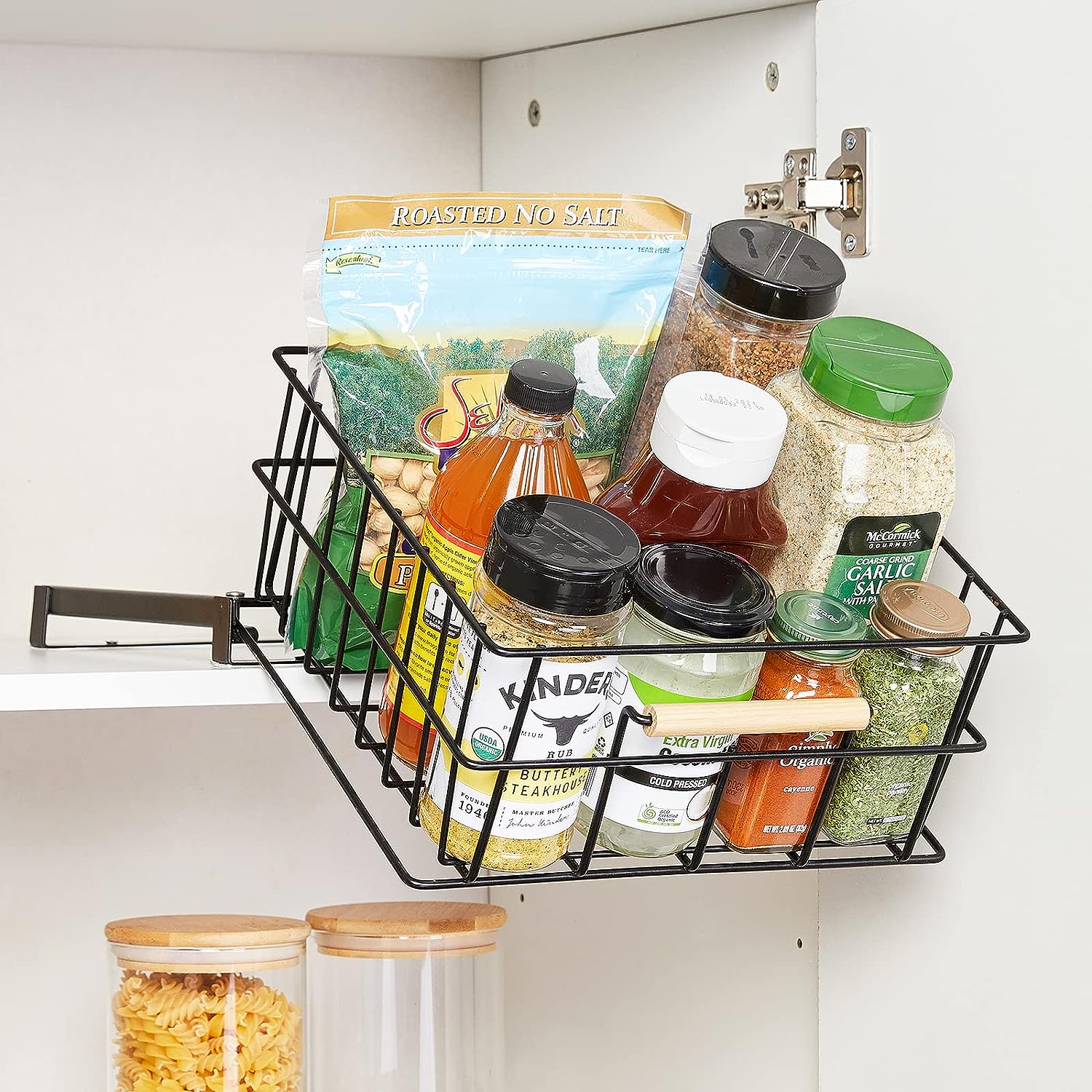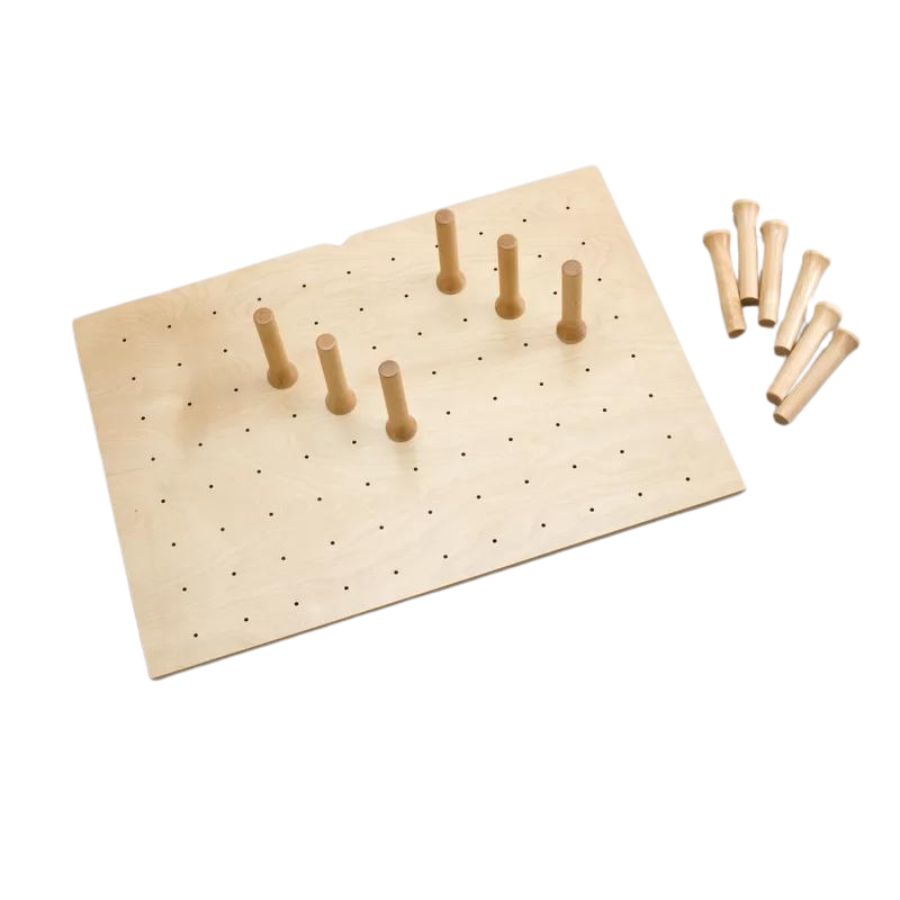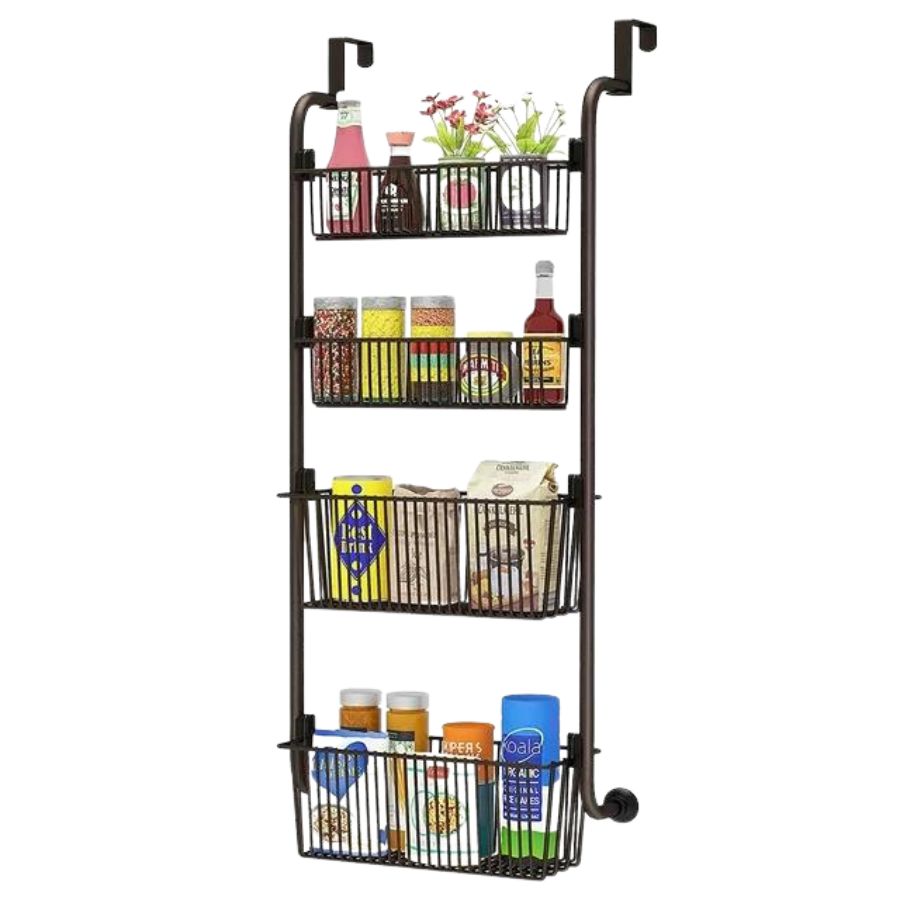7 Kitchen Storage Trends That Designers say are Best Avoided
Storage trends come and go in the kitchen, but which do we need to steer clear of to achieve the most efficient and beautiful space?

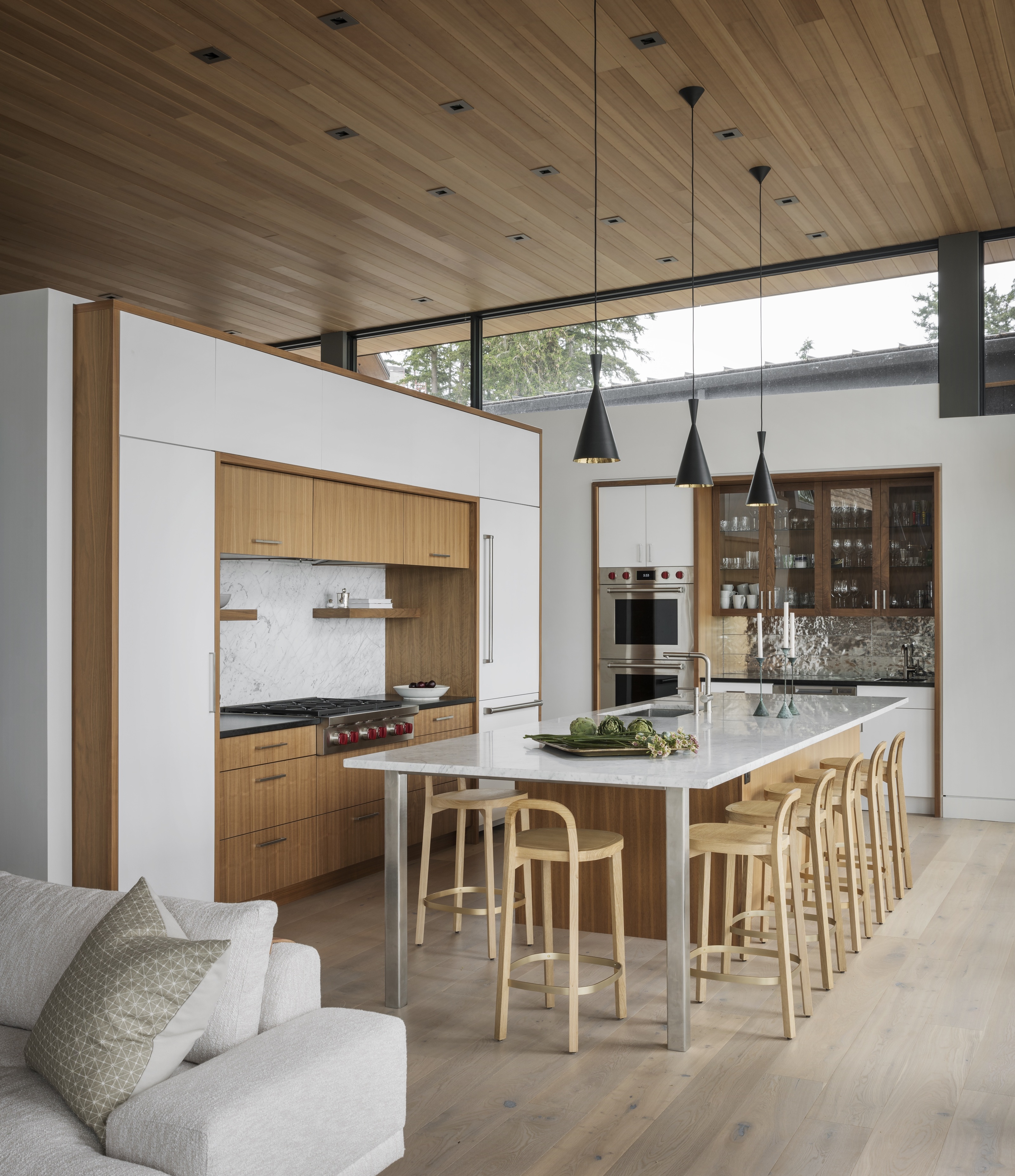
Kitchens are a big investment, both in time and money, so it’s essential you achieve the right design to suit your household for years to come. This means being aware of the rapid change in trends and opting for a more timeless approach that works best for you in a style you really love.
The goal is to create a fully functioning kitchen where all your spacial needs are met and if you manage to involve some extra features, that’s a bonus! But there are some kitchen trends we should avoid when it comes to the practicality of these all-important spaces — whether they're style over substance or just not all their cracked up to be, here's what designers think.
1. Excessive open shelving
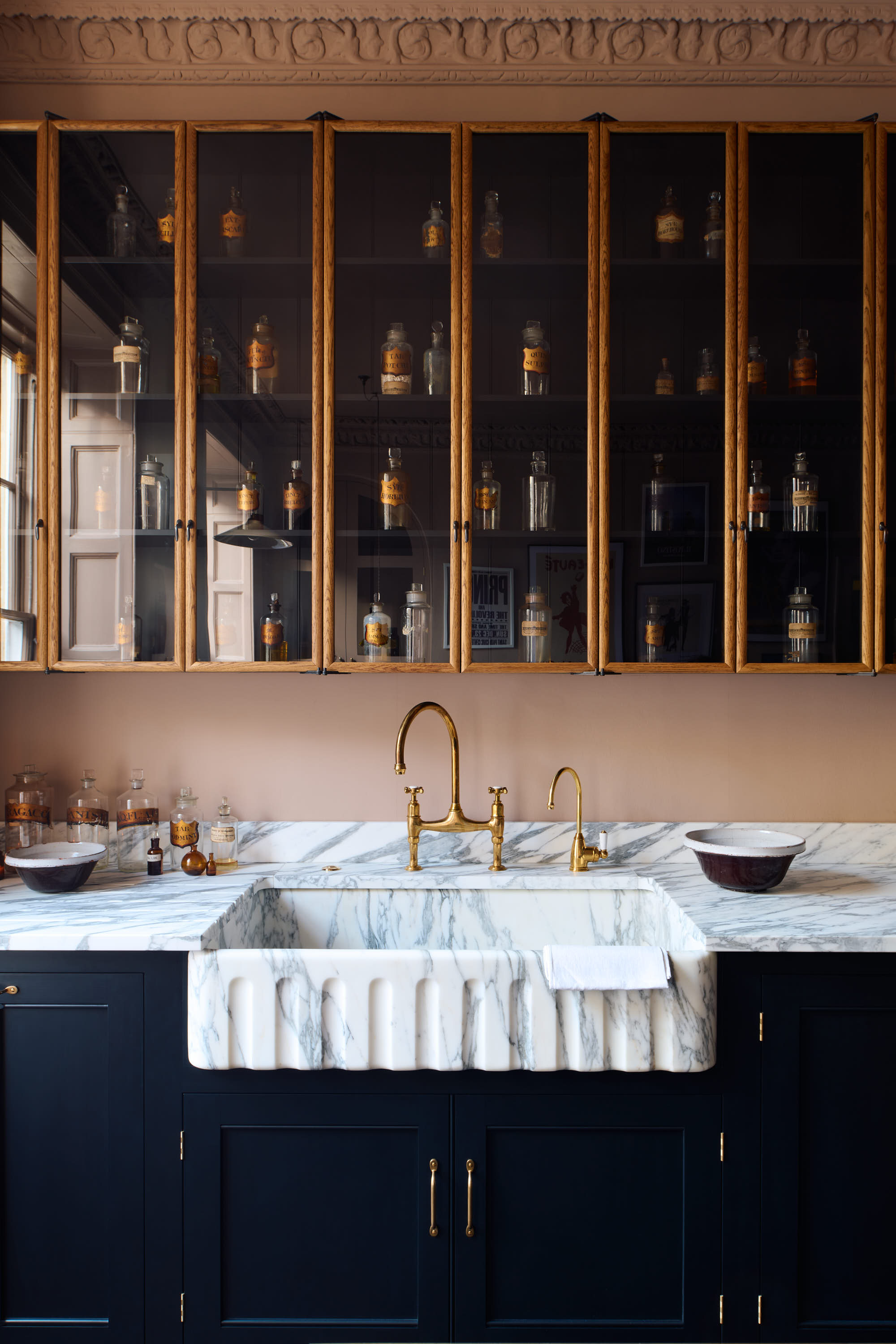
Open shelving in a kitchen can be a stylish feature to give the kitchen some personality, but without proper organization it can quickly become the place to put things.
‘Excessive open shelving can look cluttered and messy.’ says Merlin Wright, Design Director of Plain English, a kitchen design studio with showrooms in New York and Los Angeles. ‘The trick is to incorporate an open dresser or a single long open shelf with well-considered content. Too many things can give the feel of an overstuffed dresser, as is often the case. "Less is more" and a collection of same-colored china, or a line of simple bowls, doesn’t dominate or confuse the eye, so it adds a sense of calm. The only exception to this is in a pantry where the more well positioned shelving on neat brackets the better!'
Long term it’ll be best to avoid a space where it could result in accumulating clutter and dust, requiring frequent deep cleaning.
2. Overcomplicated storage systems

From labeled jars to hidden compartments, and baskets with lots of tubs layered inside, these ways of storage are often begun with good intentions but as time goes on, they become messy and disorganized, and, therefore, wasted time in the kitchen.
You need equipment and ingredients easily accessible when cooking, so it may well be that stacking all these layers up feels good at the time but ends up not being quite as functional as the system you had in mind. It may be a case of reorganizing a single layer or row of jars with visible labels and leaving it as simple as that. ‘If you have a smaller kitchen and use a cabinet as your pantry, avoid piling things onto the shelf without containerizing them first,' says suggests Amanda Wiss, Founder of NYC-based home organizing firm Urban Clarity. 'I have a bin on my shelf that is specifically devoted to breakfast items like my coffee, tea bags, oatmeal, cinnamon and honey. By grouping items that are typically used together, I don’t find myself rifling through several shelves to put together one meal.'
The Livingetc newsletters are your inside source for what’s shaping interiors now - and what’s next. Discover trend forecasts, smart style ideas, and curated shopping inspiration that brings design to life. Subscribe today and stay ahead of the curve.
If you know which systems work efficiently for you, hold on to them.
3. Countertop storage
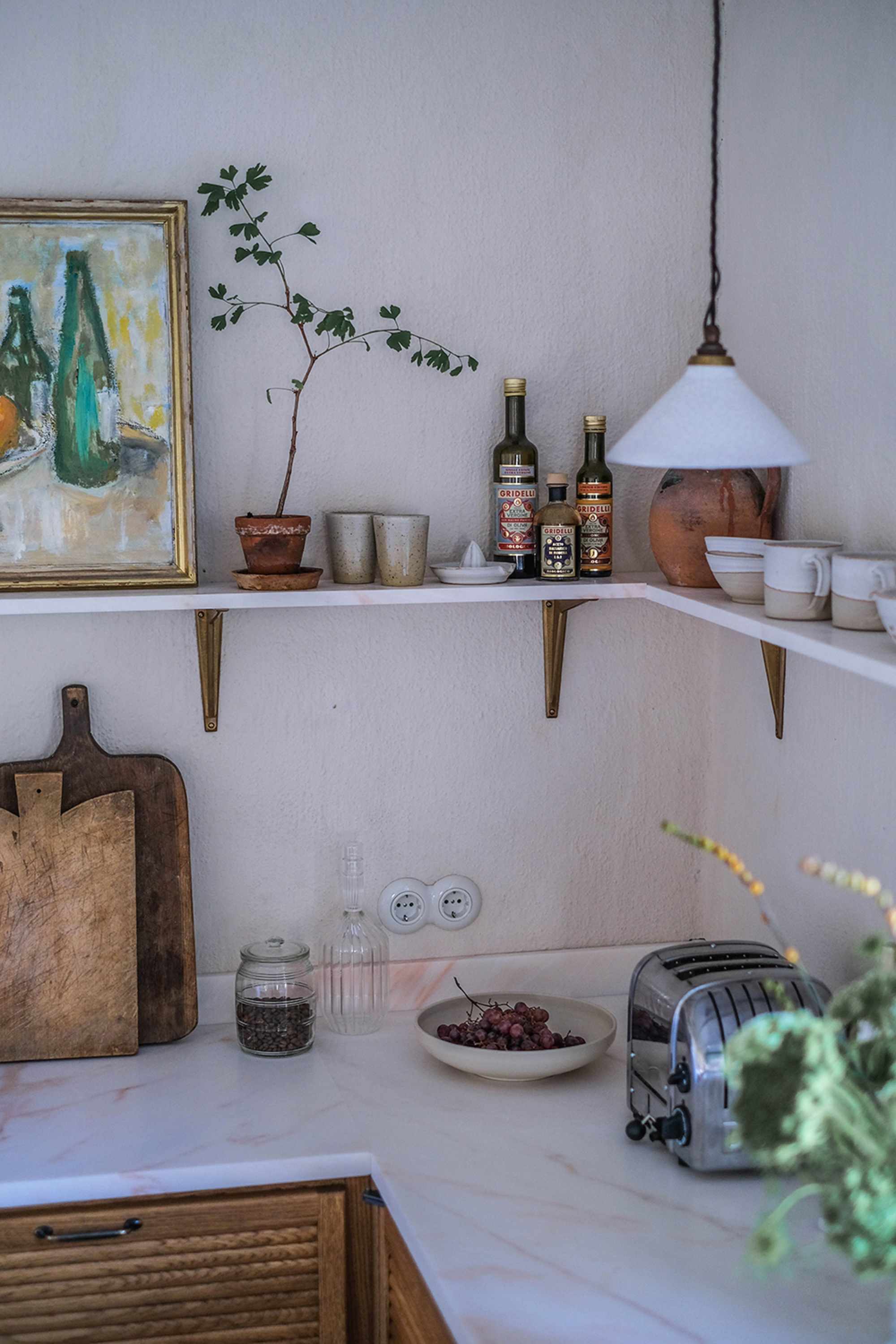
Stylish countertop storage may be a trend we're seeing more of, but overcrowding kitchen countertops with too many appliances or containers can make the kitchen feel cramped and cluttered, and nobody wants wires permanently trailing around their chopping board while preparing dinner.
‘The most exciting kitchen would be one in which the surfaces were clear and everything was where it belonged, not where it fit,’ says Ben Soreff, Professional Organizer at House To Home Organizing. Aim to ensure all essentials have their place in the kitchen and if you do have any items out on the worktop, let it be aesthetically pleasing as well as practical, such as a few good looking chopping boards, a couple of pinch pots, and a bottle of olive oil for cooking with.
4. High overhead storage
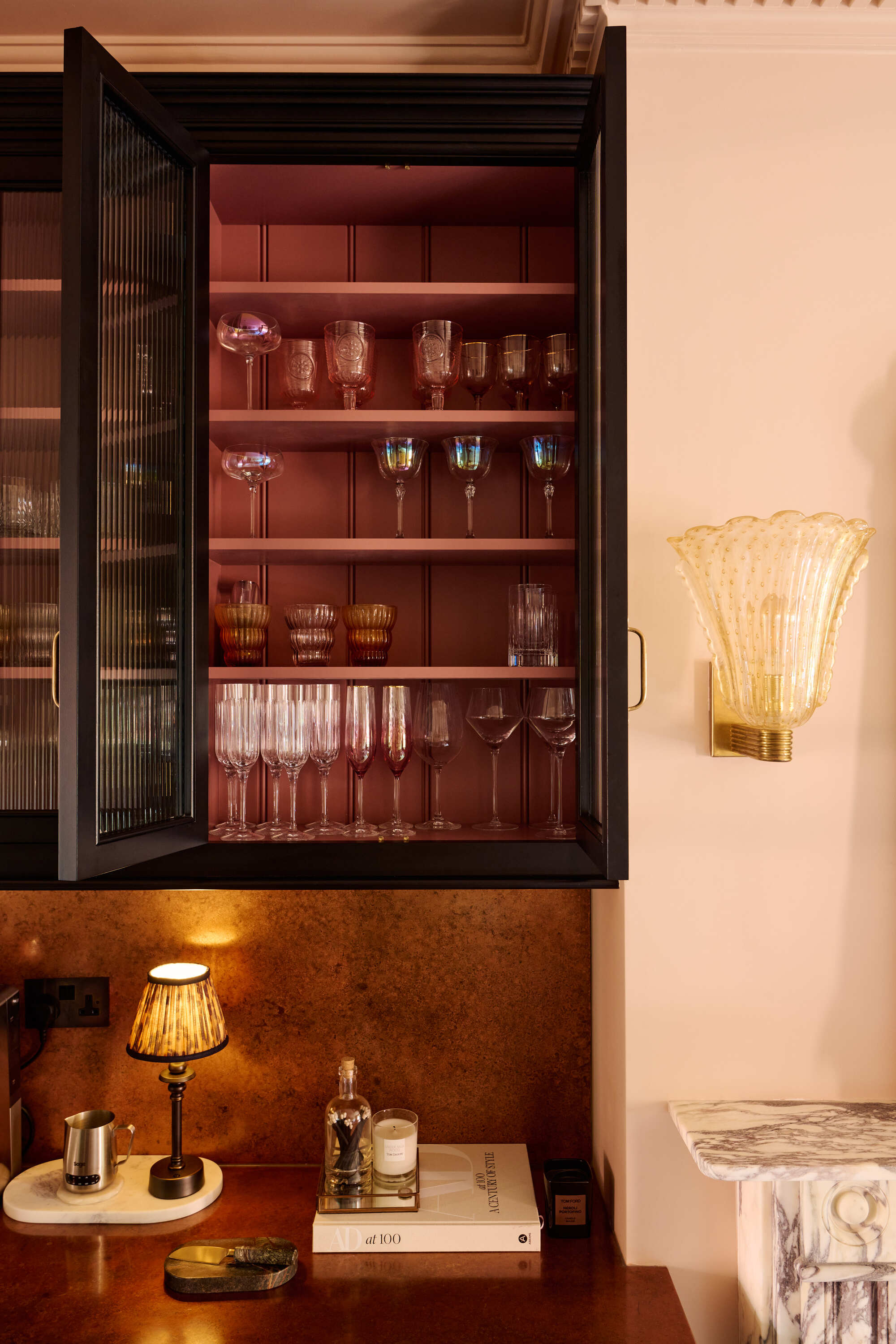
At the time of designing your kitchen, wall cabinets to the ceiling seem like a great idea (and can look stunning!), but realistically they often get filled once with items which are seldom used, and then they’re barely touched again.
‘When you can’t reach items with even a normal step stool, that is an issue.’ says Ben Soreff. ‘In a perfect world the very top level would be glass or open to showcase only decor.’
When high-level storage is unreachable without assistance, you may like to opt for featuring a ladder on a rail to ensure constant use of the space, which will add a whole load of character and style to your kitchen. There are some other clever ways to reach high cabinets like baskets that slide out and down that can help, too.
5. Complicated corner cabinets
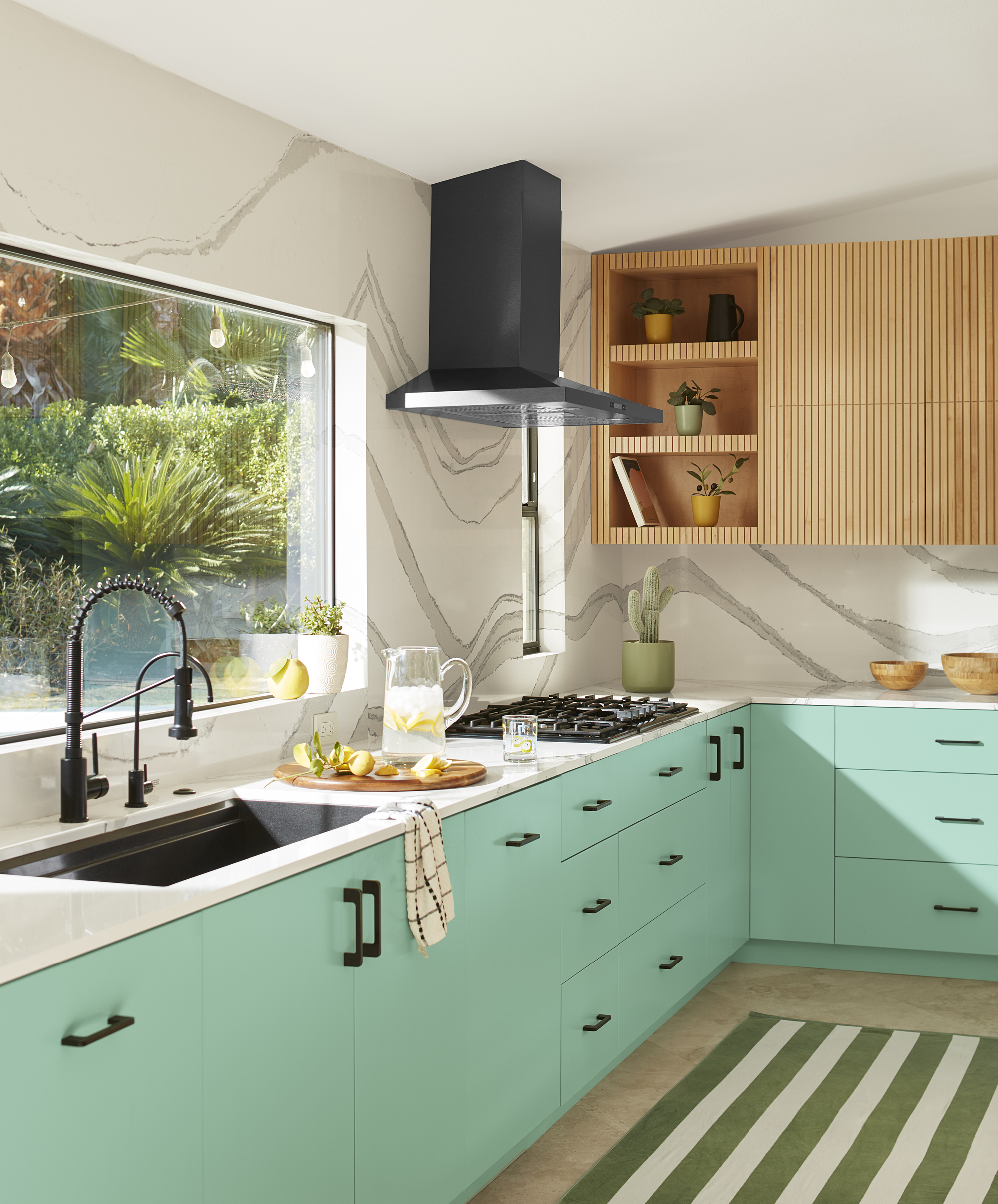
Corners can seem like the perfect place to install a special storage unit, in an attempt to make the most of the extra space. However, the corner cabinet presents a challenge.
‘In a perfect world every corner cabinet would only exist with a pull-out turntable/drawer,’ says Ben Soreff. ‘However, most people either have a regular large turntable or a deep shelf. With the deep shelf, the area becomes a black hole. With the turntable, items fall over and get trapped. So we recommend storing larger seldom used appliances in the corner instead.’
This gives these appliances a spacious place to live and avoids the catastrophe a corner cabinet usually results in.
6. Too much glazed cabinetry
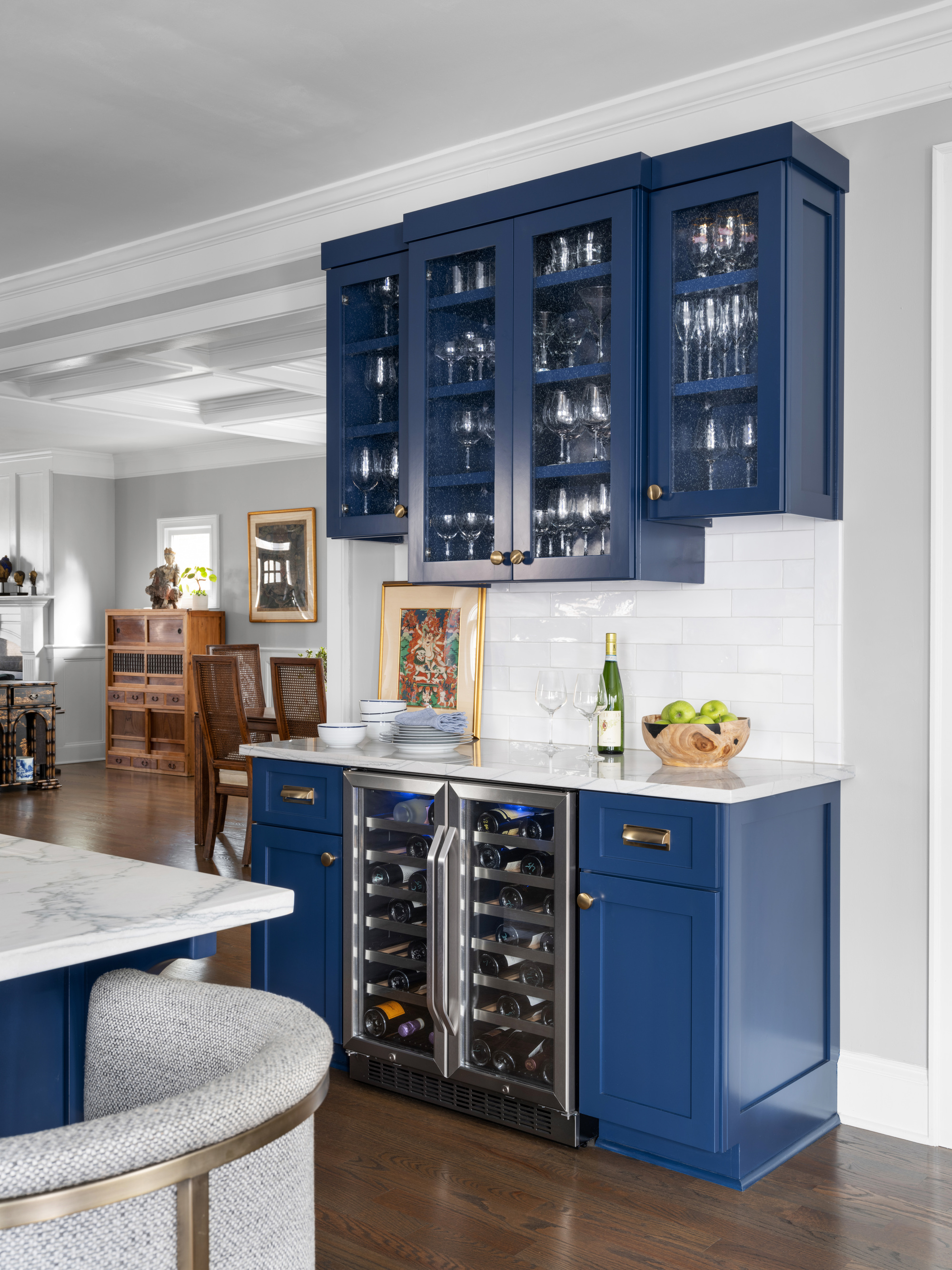
Glass can be a striking feature in a kitchen, but when there’s a lot of glass fronted cabinets, especially where you’re storing essential things, it’s not very aesthetically pleasing.
‘While this can look totally splendid in a dining room with a display of antique glassware, silver and color-coordinated dainties, a half-eaten packet of crackers on display next to a jar of peanut butter isn’t the look,’ says Merlin from Plain English. It’s the blurred shapes and colors of not so attractive equipment and packaging behind glass that you want to avoid. ‘Better to have some sensible solid cupboards for the unsightly items of everyday, or a big larder cupboard to take the weight of storage, allowing a well-positioned glazed cupboard or shelf to take centerstage,’ he advises.
If you’re going to have some glass fronted kitchen cabinets, ensure they are housing stylish items which you don’t mind becoming an obvious feature of the kitchen. ‘It’s a case of balance with some added variety. Solid door, wall to wall cupboards of any kind can feel claustrophobic at eye level.
Sectioning a larger room into designated areas can allow light to flow through and give additional wall space for floor cupboards. A walk-in pantry takes care of the dry foods and a tall china cupboard can then leave the luxury of a painting, lantern or an open dresser top. An open area somewhere in a kitchen gives the opportunity to play with display options throughout the year, which can be great fun.’
7. Too much storage space

Of course, when thinking about a new kitchen we all want to fit in as much storage as possible to house everything we have and keep our countertops clear and clutter-free. However, overdoing storage may mean making the space feel closed in, and will allow you to house equipment you don’t necessarily need or use – it's a vicious circle of feeling like there’s not enough space and allowing for more, but then finding you’re filling it up anyway because you have extra space to store more items. Looking at the state of your current kitchen will help to determine how much storage you really need, and a good declutter right to the backs of the units will certainly refresh your approach before any hasty decisions.
It seems that quality over quantity is the way forward when it comes to modern kitchens. ‘The key to transcending fashion is to go for simple, beautifully made classic cupboards, fittings and worktops and then add small, well chosen pieces gradually, ensuring they are things you will grow to love more rather than go off because they are a little bit ‘of the moment,’' proposes Helen Parker, Creative Director at kitchen design studio deVOL, which has a showroom in New York City. It’s important that you find a design to suit your lifestyle, and a declutter is priority before making any major decisions. Think long term rather than quick fix.
Shop our top kitchen storage picks here

Portia Carroll is an interior stylist, writer, and design consultant. With a background in interior architecture and design, she has a plethora of creative experience in the industry working with high end interior brands to capture beautiful spaces and products and enhance their qualities.
